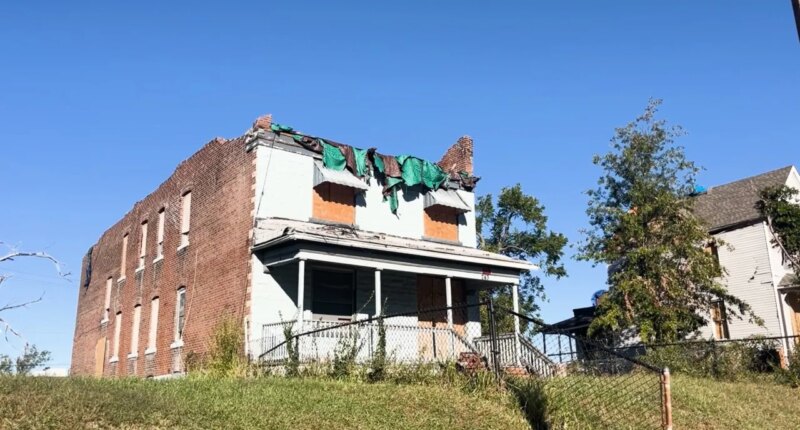Share this @internewscast.com
St. Louis tornado: six months later
Six months have passed since a powerful EF-3 tornado ravaged St. Louis, and as winter looms, many residents are still waiting for their homes to be repaired and for assistance to arrive.
The devastating storm, which struck in May, claimed the lives of five individuals and inflicted approximately $1.6 billion in damages. Numerous areas across the city remain marred by shattered windows, temporary blue tarps, and homes left in disrepair since the tornado’s aftermath.
Senator Josh Hawley of Missouri has previously emphasized the necessity of substantial federal support to aid communities in rebuilding after such disasters.
St. Louis locals express frustration, noting that the promised aid remains elusive.
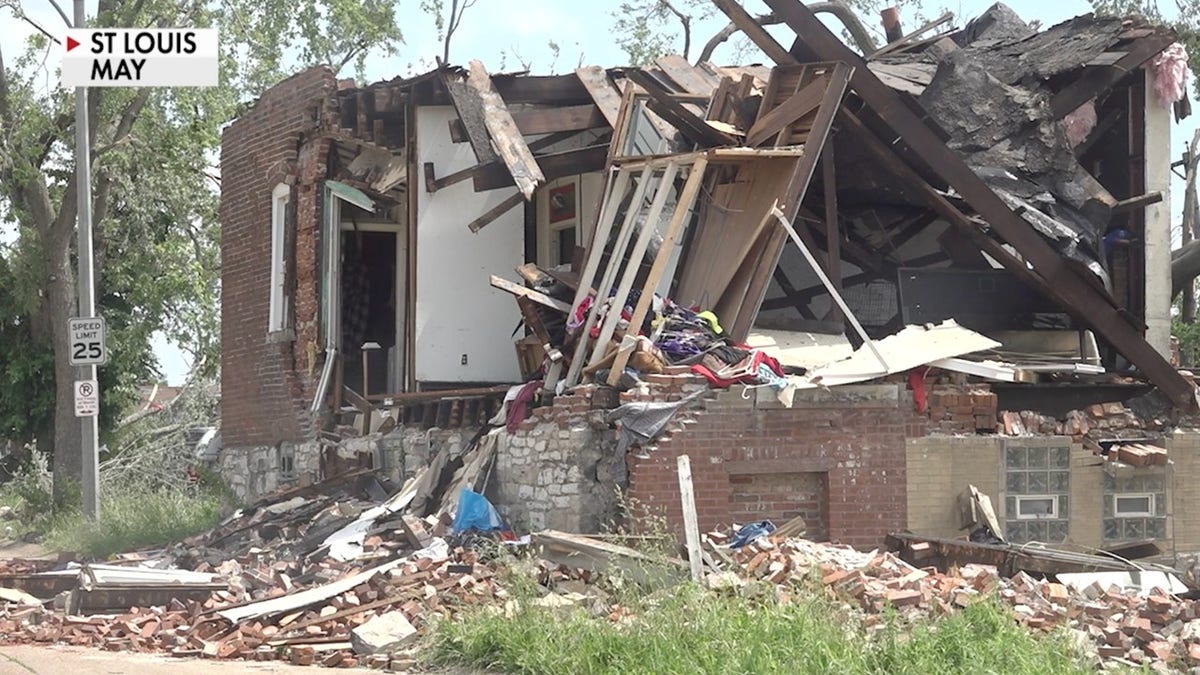
In the aftermath, a partially collapsed home sits as a stark reminder of the destruction, with bricks and debris strewn across the street. (FOX NEWS)
Benjamin Anderson, a resident of one of the most severely impacted neighborhoods for seven years and a property owner in the area, recalls being at work a few miles away when the catastrophic storm hit.
“I got bombarded by about 37 texts from my dad with photos of our buildings. Just totally… some of them literally totally destroyed,” he said, adding that one of his multi-unit buildings suffered six figures’ worth of damage. “After spending a year and a half putting our hearts and souls into a building… that was not a fun experience to have to come back to.”
He said the recovery process has been slow and confusing, even for someone familiar with contractors and insurance systems.
“I applied for FEMA five times on like 4 or 5 different properties. And we were denied every single time,” Anderson said. “I haven’t heard anybody who’s come to me and they’re like, I got a $10,000 check from FEMA, and it’s really going to help me do these things.”
According to FEMA, millions of dollars in federal aid have been approved for Missouri storm survivors, including temporary housing assistance and low-interest SBA loans. But the agency noted in an October recovery update that many applications require follow-up documentation and some denials are later overturned on appeal.
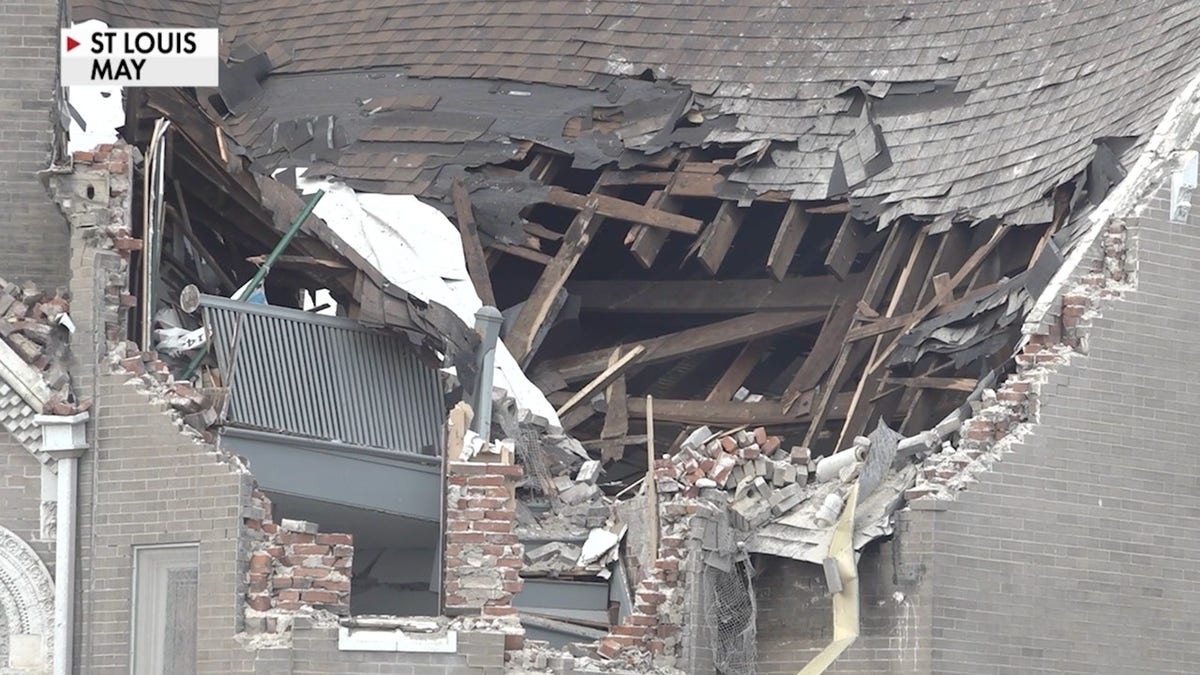
The tornado ripped open the roof and upper floors of this St. Louis building, leaving exposed beams and debris behind. (FOX NEWS)
On the ground, residents say the need is outpacing the help.
Anderson said some neighbors have already left indefinitely, so contractors can work, while others have no idea where to begin. During a walk through the neighborhood, he met a man who is still camping outside their house because the home was condemned and had no power.
At the same time, some people have tried to take advantage of the situation.
“There were people coming through the neighborhood same day… these sort of like opportunistic roofers and window people,” Anderson said, adding that he turned down one man with Florida plates who offered to put a tarp on his roof for $2,000.
He later saw similar tarps on other houses and worried neighbors paid out of fear.
Not everyone lost their homes entirely, but many are navigating a long and confusing recovery.
Homeowner Misty Williams, considers herself lucky, but is still feeling the strain.
“It’s okay. We had some… damage to our house,” Williams said. “Thank God, you know, it was as minor as it was. My heart does go out to people, you know, that’s going to a total loss.”
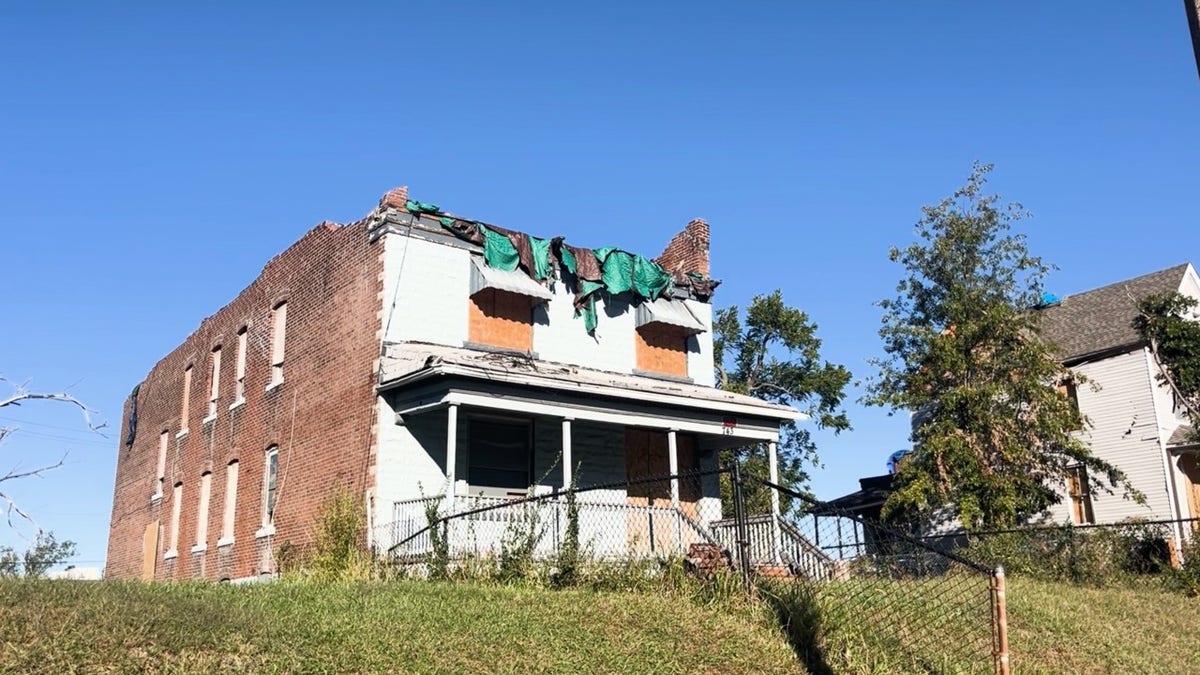
Boarded windows and a shredded tarp remain on this St. Louis home six months after the tornado, showing how much work is still unfinished. (FOX NEWS)
Still, she said the money they received doesn’t cover everything. “Sometimes the repair cost far exceed the amount that you’re given,” she said.
Williams said she’s hopeful about a new city program called STL Recovers, which helps tornado survivors figure out what assistance they qualify for and how to begin repairing their homes.
Experts say that emotional impact often hits hardest at the six-month mark.
“Six months following a significant natural disaster is an important psychological time,” said Dr. Joshua Klapow, a clinical psychologist. “Six months is really, if you will, the end often of the adrenaline rush. And so now we’re tapping into much deeper resiliency efforts.”
He said survivors often feel more worn down months later than they did right after the storm. “For individuals, they can often feel like they don’t have the steam to keep going,” he said. “This is the time where those feelings of sadness and loss really can hit home.”
Winter weather can make that even more difficult. “Cold temperatures, less daylight… when you are also trying to navigate getting your life back together, those two things can compound,” Klapow said.
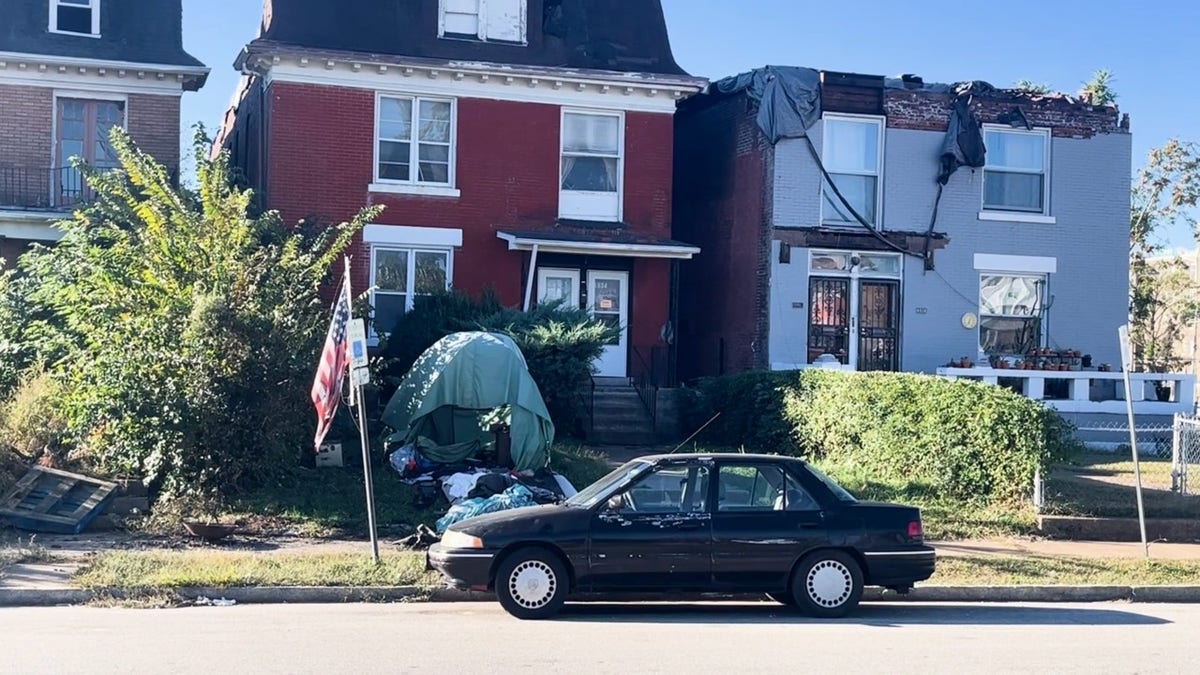
A tent sits in the yard of a storm-damaged St. Louis home, where someone appears to be camping on the property months after the tornado. (FOX NEWS)
In St. Louis, residents like Anderson are simply hoping the next six months look different from the last six.
“There’s still people who are sleeping outside their homes and it’s starting to get cold,” he said. “I hope that their situations are figured out so that maybe they do get some of that help… to move back inside in the winter.”
